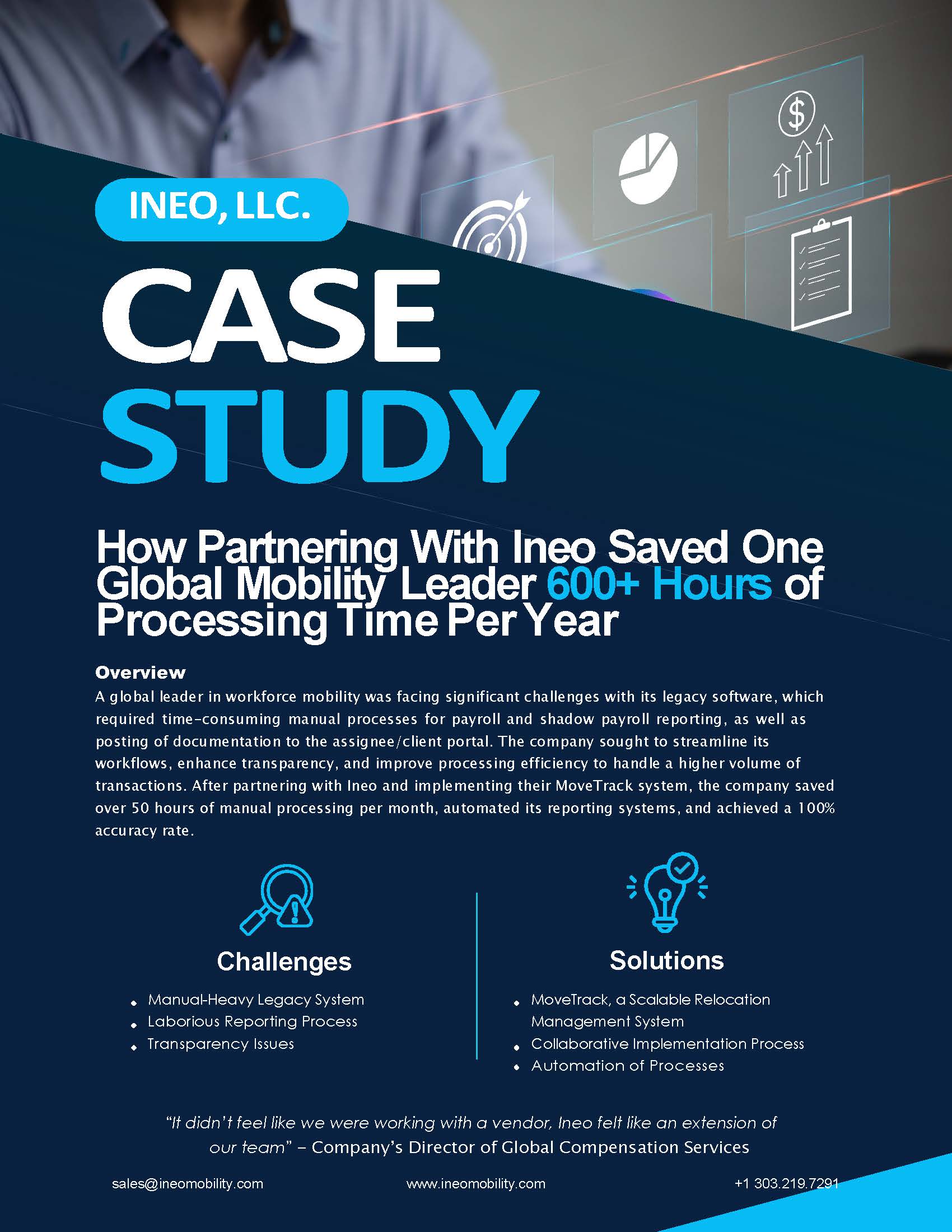A Quick Guide to Global Mobility Tax Terms: Part Two

Our convenient glossary of global mobility tax terms continues with nine more complex terms made approachable for everyone.
As we mentioned in the first half of our glossary, tax terminology is nothing short of involved.
If you were to ask Google “why are taxes so confusing?”, you’d receive a staggering 16,500,000 results in 0.55 seconds flat. Though it might be comforting to know an abundance of people are similarly flustered, it doesn’t do much to help you untangle the tax term knot.
If you’re still feeling disoriented by global mobility tax terminology, we’re here to support you through the tax term turbulence with these definitions below:
Nine Frequently Used Global Mobility Tax Terms
1. Lump-Sum Reimbursement
A lump-sum reimbursement describes a payment of an aggregate fixed amount meant to cover the entirety of a transferee’s moving expenses. Lump-sum reimbursements are made regardless of the deductibility status of moving expenses on a transferee’s tax return.
It’s important to note that an employer must report the entire lump sum reimbursement amount as wages. It’s then up to the transferee to take advantage of all allowable state tax deductions by reporting qualifying expenses and making appropriate modifications to their state-adjusted gross income.
2. Main Job Location
A main job location, or “tax home” is the place where you spend the majority of your working time. Unlike a domicile, a main job location is the general locality (i.e. Denver, CO) of your primary place of work rather than a pinpointed street address. Designating a main job location is crucial to tax income and benefit determinations.
If there isn’t a singular place where you spend the majority of your working time, then your main job location is considered to be where your work is based.
3. Metrics Household Member
A metrics household member is anyone who uses both your former or new address as their primary address. This doesn’t include tenants or employees unless you claim them as dependents.
4. Moving Expenses
Moving expenses refer to costs incurred in relation to a transferee’s relocation. Moving expenses include costs such as travel fare, packing, moving household goods, and shipping vehicles.
Moving expenses don’t, however, cover the gas station snacks you snagged while driving on your relocation road trip, or the hotel you stayed in overnight when visiting a family member while on your trip! Remember, your journey should be the most direct route using conventional transportation.
The Tax Cut and Jobs Act (TCJA) of 2017 eliminated the option for most taxpayers to deduct moving expenses, except active-duty military members and taxpayers residing in AR, CA, HI, MA, NJ, NY, and PA.
5. IRS Forms
Because taxes are uniquely situational, the IRS has had to consider all potential tax circumstances and draft an assortment of forms to address each situation. Currently, the IRS utilizes over 800 various forms and schedules. We assumed you weren’t prepared to peruse a comprehensive list of all 800, so we’ve whittled it down to a manageable selection of two forms that are commonly utilized in global mobility tax situations:
IRS Form 1098, Mortgage Interest Statement
IRS Form 1098 is used to report a taxpayer’s mortgage interest (including points) in excess of $600 or more, received by a lender in connection with the ownership of the real estate. A copy of this form will also be sent to the IRS, courtesy of the lender.
IRS Form 1099-S, Proceeds from Real Estate Transactions
IRS Form 1099-S is used to report gross proceeds from certain real estate transactions, such as land, residential or commercial buildings, or condominium units.
6. Points
In regards to mortgages, points are a discount adjustment of the stated mortgage interest rate earned at the commencement of the loan. Points are calculated in relation to the loan amount. With points, a borrower will pay more at the outset in exchange for lower interest rates. If possible, choosing points is encouraged as it lowers a borrower’s total owed sum over the lifetime of the mortgage.
Points may also be referred to as loan origination fees, maximum loan charges, loan discount fees, or discount points.
7. Tax Equalization
Tax equalization is a method of tax compensation in which the employer is responsible for paying a transferee’s home and host country tax liabilities. The transferee contributes a hypothetical tax, which is based solely on their home country’s tax rate and not the combined rates of their home and host countries. If the hypothetical tax is less than the actual tax, the employer is responsible for the difference.
Tax equalization is the most common approach used by global mobility programs in regards to transferee tax liability, as it neutralizes global assignment taxes and encourages tax compliance.
8. Tax Protection
Tax protection is a tax compensation approach that, similarly to tax equalization, seeks to manage transferee tax compliance. In the case of tax protection, a transferee is responsible for tax liabilities in their home and host countries. If the actual taxes paid are greater than the hypothetical taxes, the company is required to reimburse the transferee. If the actual tax paid amounts to less than the hypothetical tax, the transferee receives no adjustments.
Take the hypothetical out of tax protection and equalization
Both tax equalization and tax protection are commonly encountered global mobility tax reimbursement approaches. Each approach requires that a company accurately predicts hypothetical taxes to avoid themselves or their transferees suffering unexpected tax liabilities. Because both tax equalization and protection programs necessitate accurate tax predictions, it’s recommended that employers work with trusted global mobility tax consultants to remove any room for errors.
9. Schedule A
Schedule A (Form 1040 or 1040-SR) is a form utilized by individual taxpayers to report itemized deductions. Schedule A forms are used when a taxpayer chooses to itemize instead of claiming standard deductions or in instances when the itemized deductions total more than the standard deduction amount.
Schedule A may be appropriate for taxpayers who dealt with extensive uninsured medical bills, experienced uninsured casualty or theft losses from a Federally declared disaster, or paid mortgage interest or property taxes on their home.
Global mobility tax terms made practical
While there’s power in knowing the definition of a term, sometimes it requires practical experience to put the term to work. Understanding what a lump-sum reimbursement is doesn’t necessarily translate to knowing how to accurately calculate one.
Need help taking these tax terms into the tax world? Contact us regarding your questions about pre-move tax consultations, multi-state, and international relocation estimates and returns, and more.
Global Mobility Resources
Learn more about what’s going on at Ineo and insights into the complex world of global mobility from the industry’s top thought leaders and innovators.
Request A Demo
Whether you are new to the world of global mobility or you’ve been in the business for a while, Ineo is here to assist you.
The best way to learn how Ineo’s global mobility software can help your company revolutionize your global mobility program and support your business strategy is to see it in a demo.
Fill out this form to get started today.
Get Started






